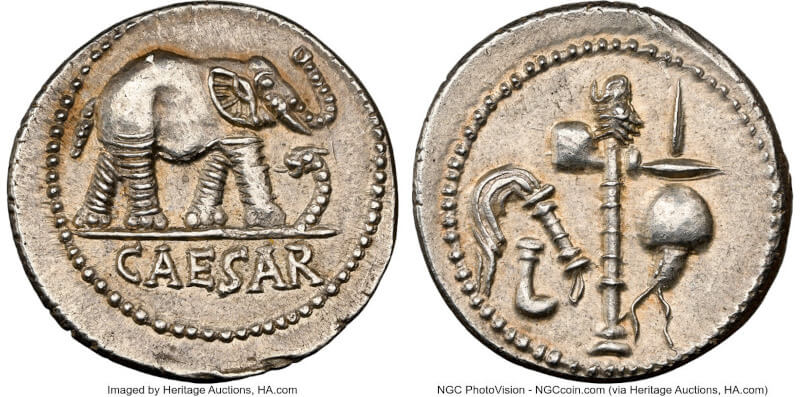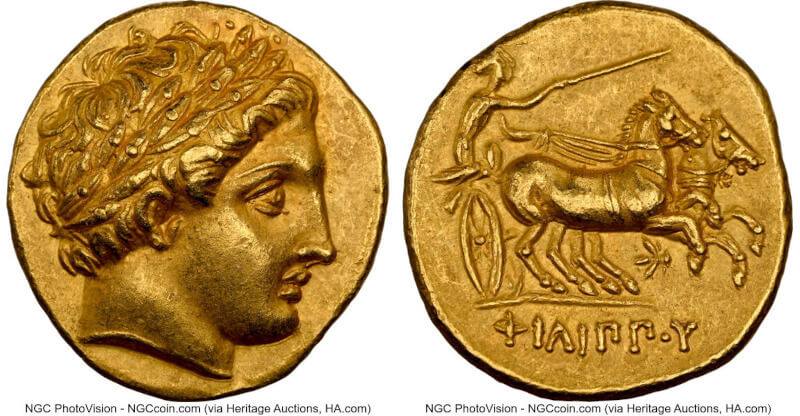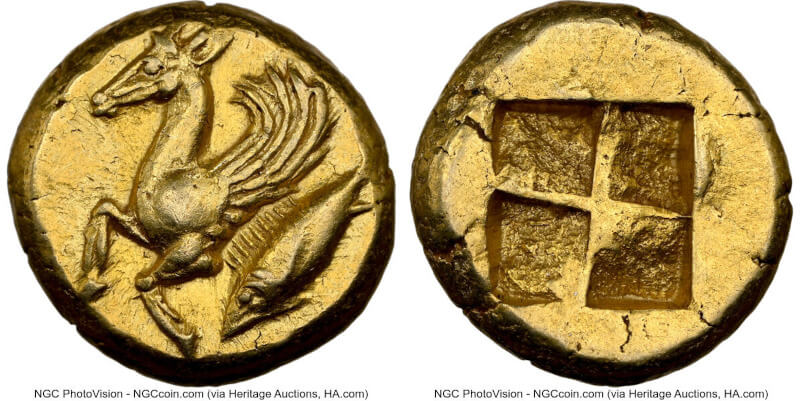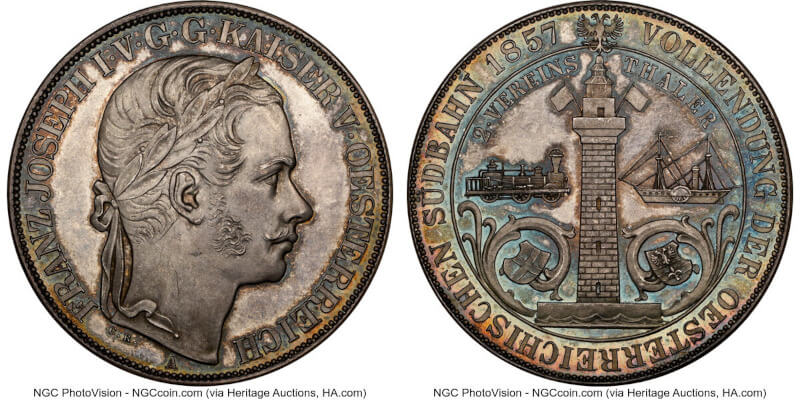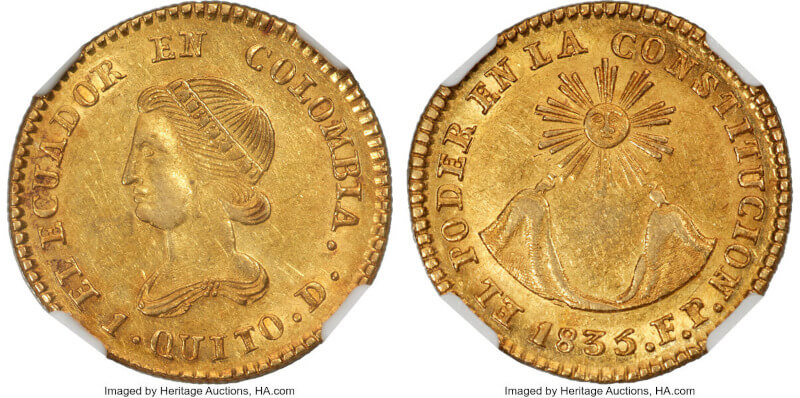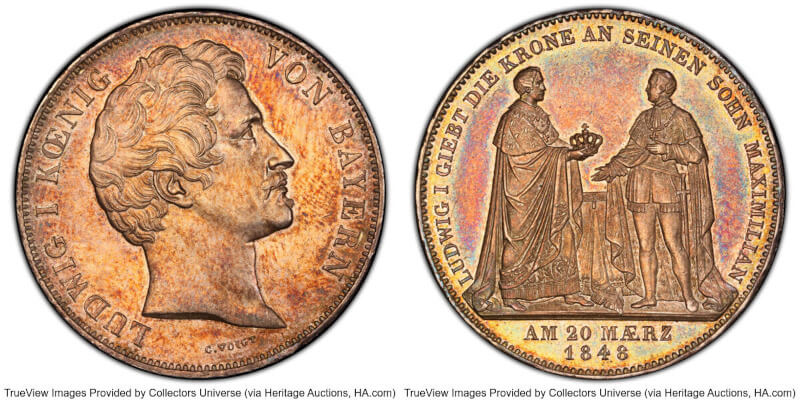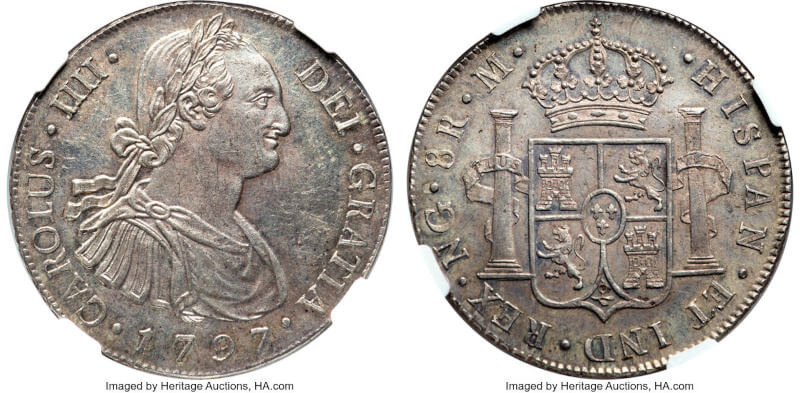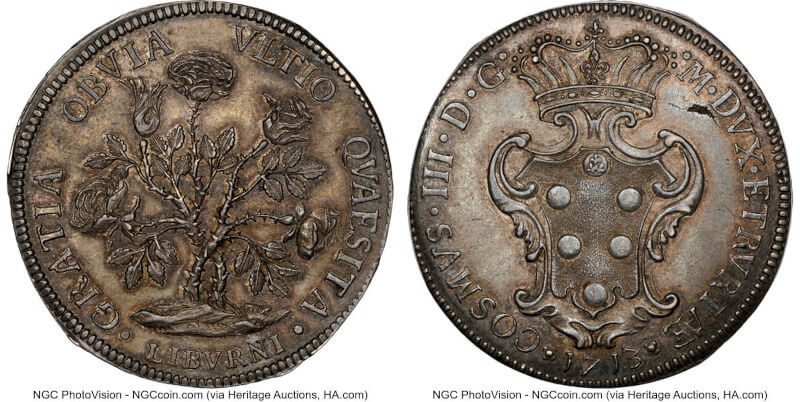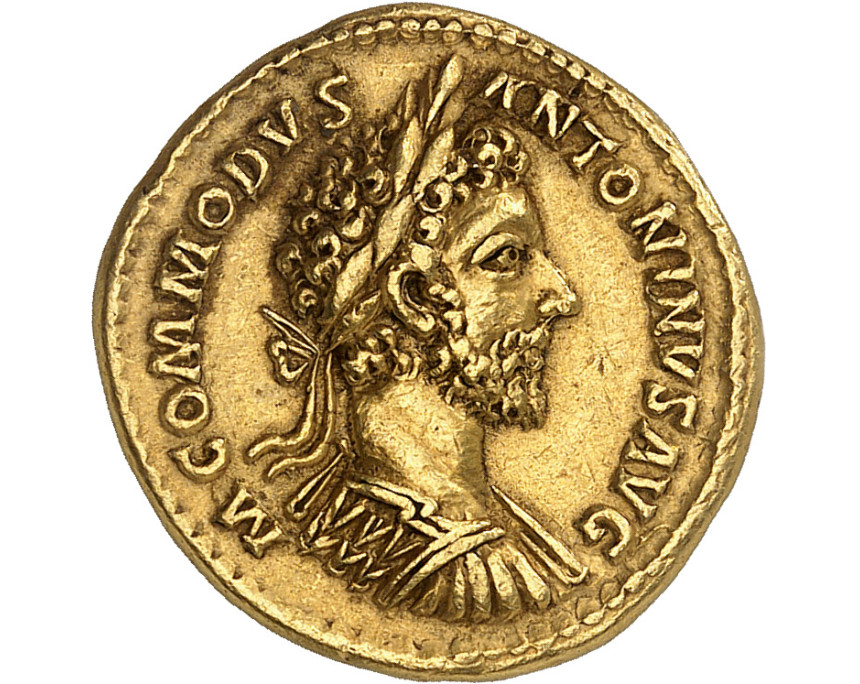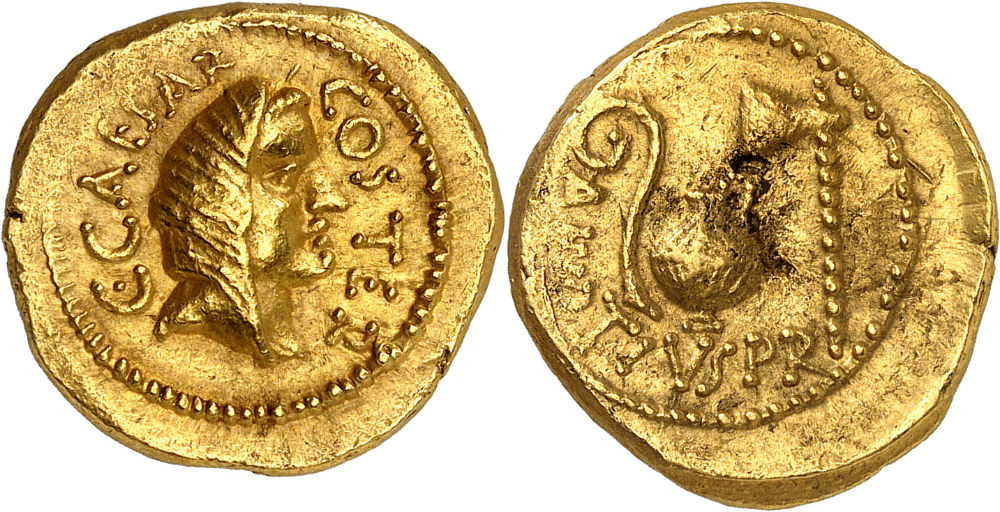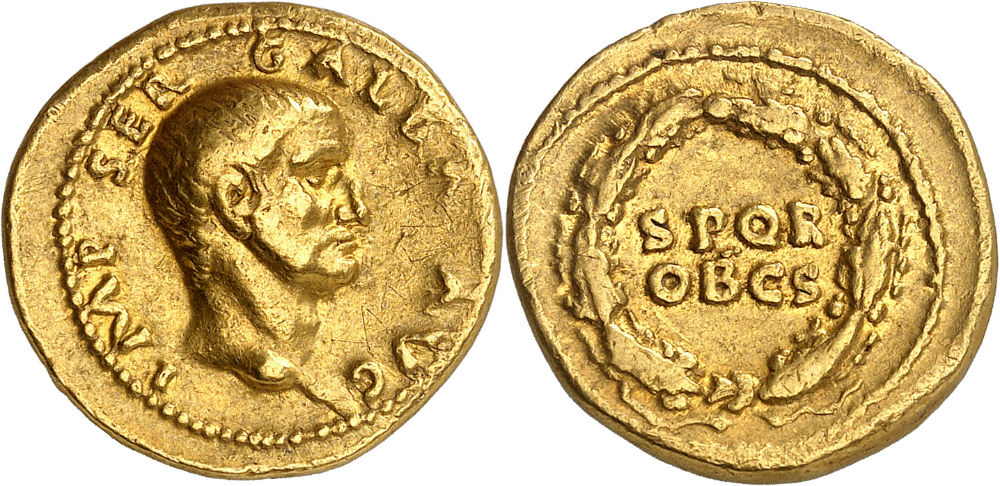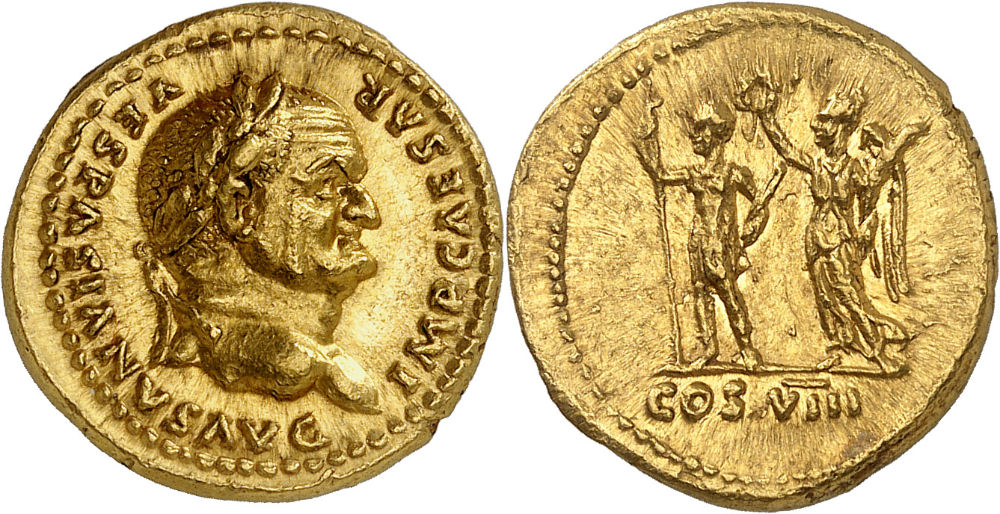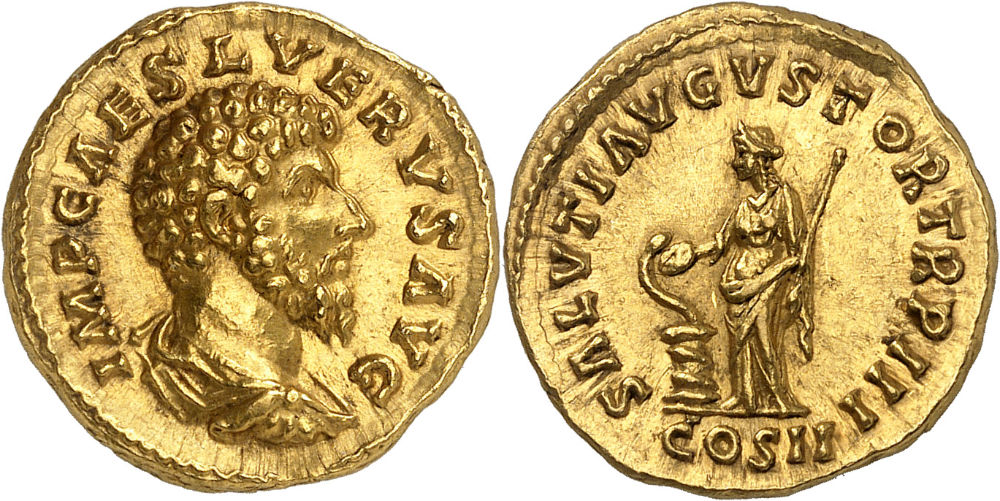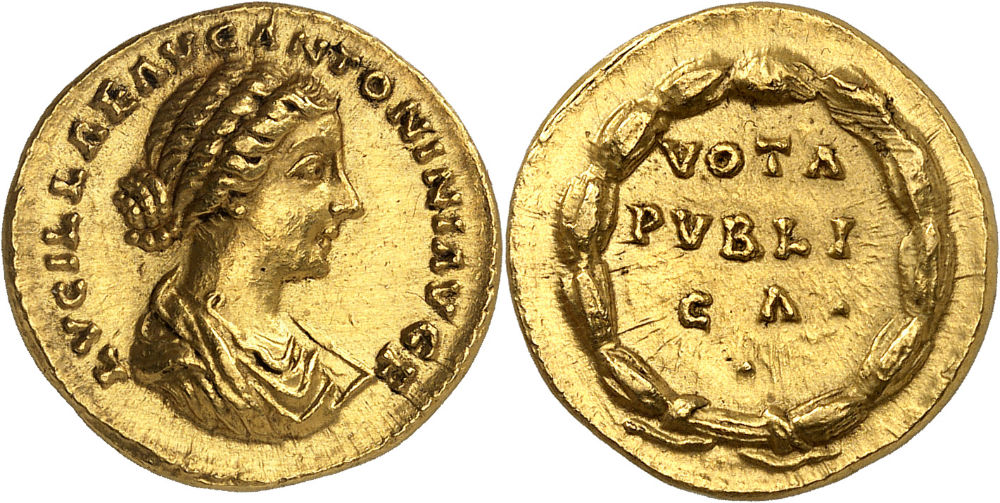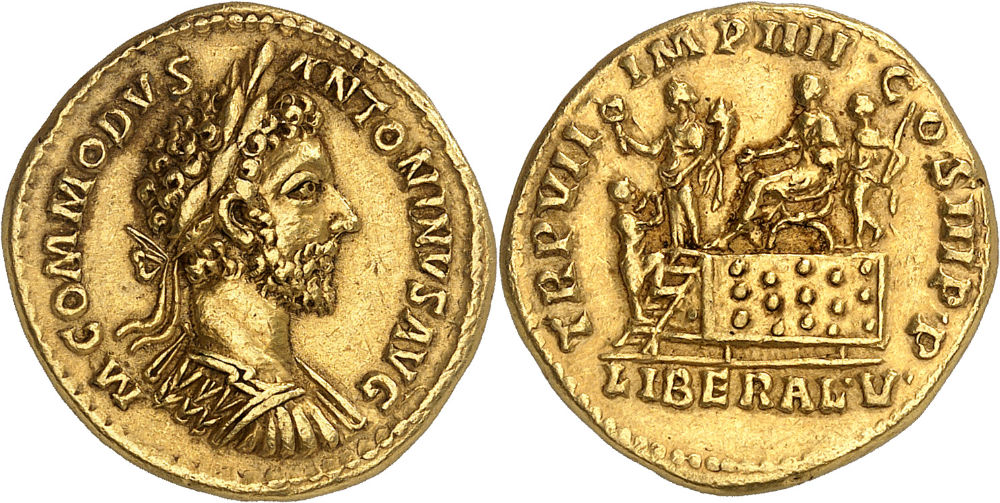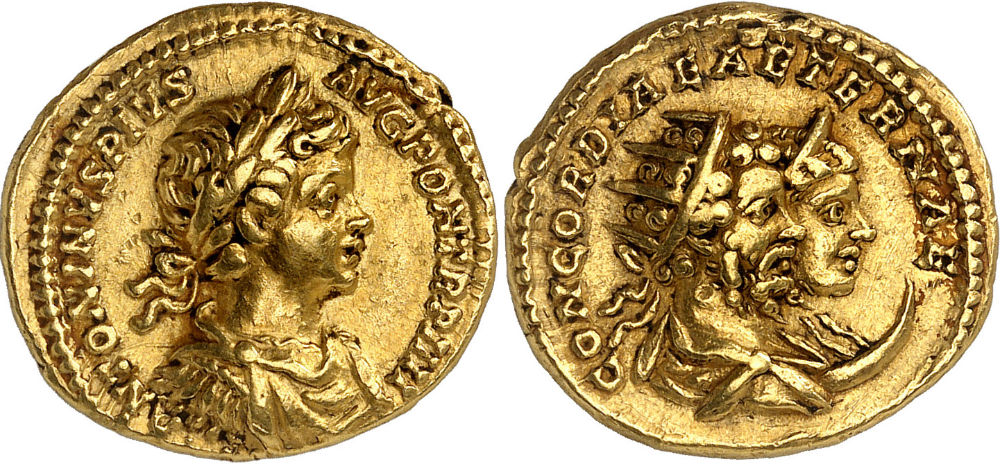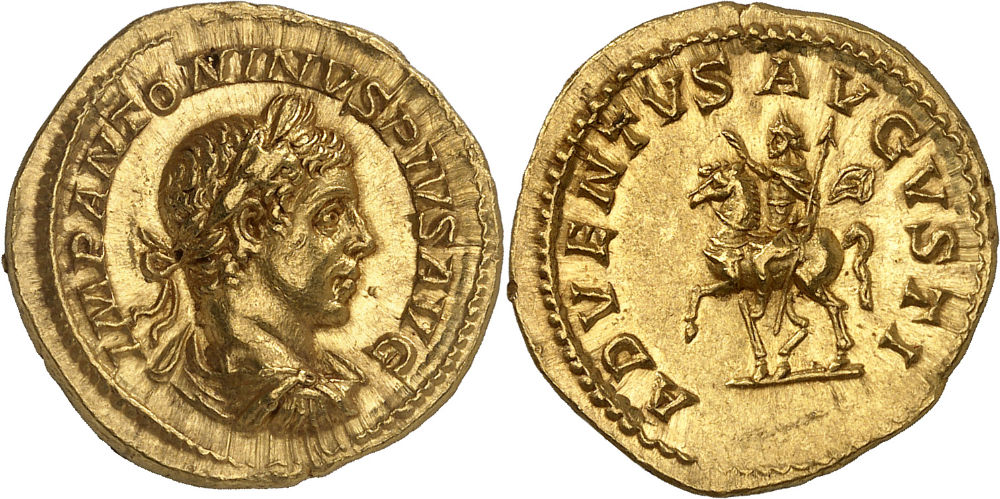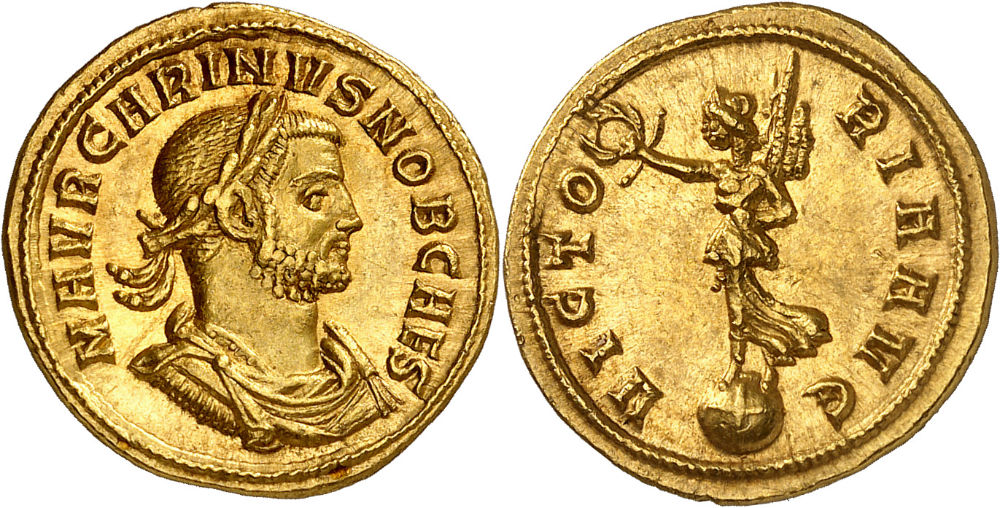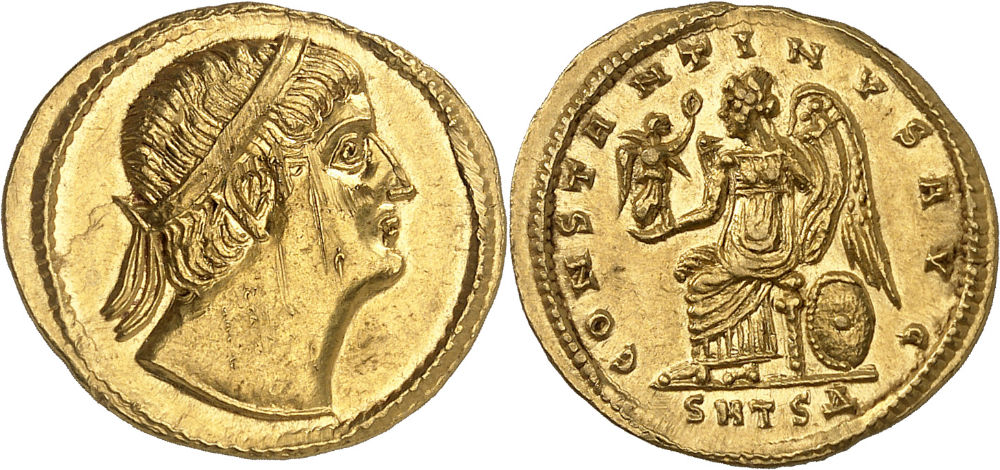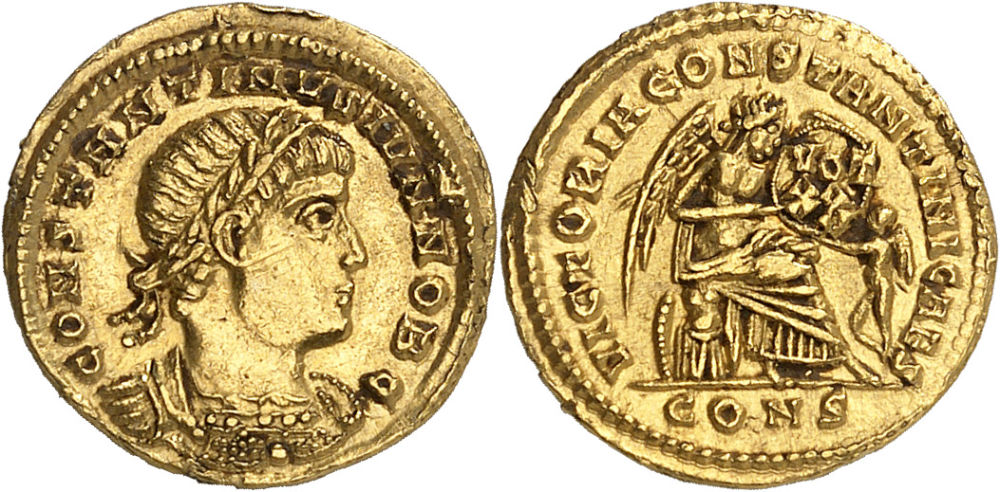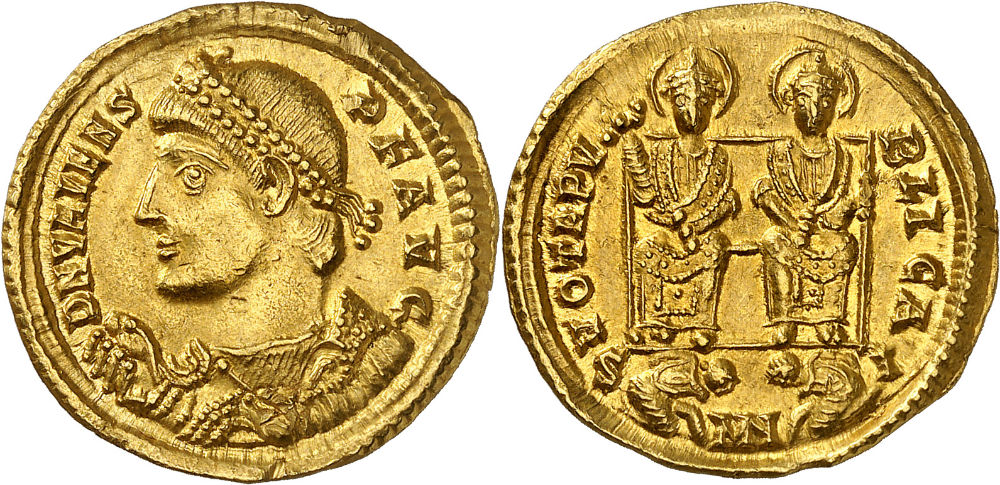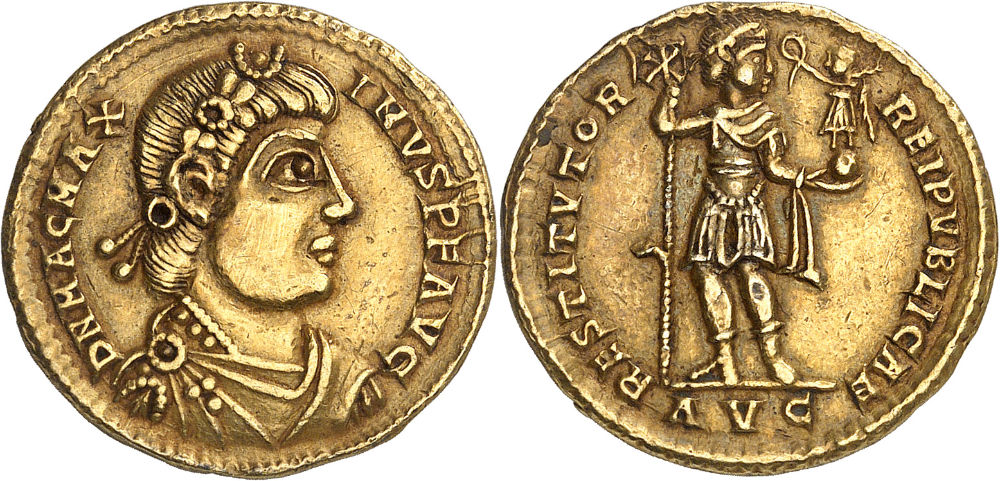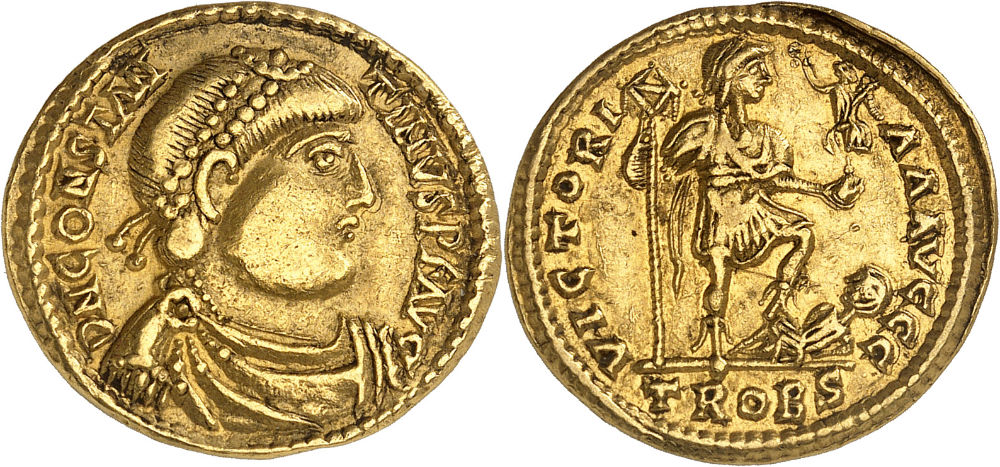Roman Gold Coins: The R.L. Collection
Paul-Francis Jacquier
Auction 53
Coins
13. September 2024
Online
Before the First World War, classical collectors of ancient coins had one main goal: to acquire a Roman coin of every emperor. Depending on their budget, they either collected gold or silver specimens. Paul-Francis Jacquier’s auction 53 will feature such a collection of gold coins of the Roman emperors. Three generations were committed to preserve and expand the ensemble.
The R.L. Collection
It is the dream of many a coin enthusiast to see fresh material come to market that was kept in a collection for many generations. This dream will come true in Jacquier’s auction 53 with exactly 100 Roman gold coins, starting with Gaius Julius Caesar and finishing with Constans II – the Byzantine Emperor who tried to reconquer the Western Empire.
As is the case with all truly old collections, the first two of the three collectors based their decision to acquire a piece on the quality of the dies or the historical interest of the reverse motif rather than on it being of perfect condition. Nevertheless, lovers of perfectly preserved coins will find numerous gold coins of extremely fine or better quality. This is the great strength of this collection: it contains aurei for every budget. Whether you are looking for a high-profile investment object or an affordable piece to fill a gap in your collection – this auction has something for everyone.
Look forward to a selection of historically interesting gold coins that tell the story of the Roman Empire.
The Twelve Caesars
Missing a gold coin of one of the Twelve Caesars in your collection? There is a good chance that you will be able to fill that gap as the auction sale will begin with 16 pieces of ten emperors from the first period of the Roman Empire.
Particularly noteworthy is an aureus of exquisite style of Caesar together with Aulus Hirtius, who served as the great general’s legate in Gaul. Hirtius is considered to be the ghost writer of the 8th book of Caesar’s De bello gallico. And if you lack a Galba in your collection, you will have the opportunity to acquire a piece with a particularly distinctive portrait, whose provenance can be traced back to 1934.
The Adoptive Emperors
There are three aurei each of Trajan, Hadrian, Antoninus Pius, Marcus Aurelius and Lucius Verus, as well as rare pieces with the wives of the emperors; not to forget the highly rare 182 aureus of Commodus – as you can see, there is a rich selection of coins from the Adoptive Emperors!
The aureus of Commodus gives us a wonderful insight into the emperor’s social policies: It depicts the emperor on the sella curulis, sitting on a podium with a bodyguard behind him. A citizen climbs up the small ladder to the podium to receive his share of the distribution. The female figure to the left of the ruler shows the link between emperor and citizens. It is the personification of imperial liberalitas, depicted with an overflowing cornucopia and an abacus, with which she carefully calculates that each citizen receives the share he is entitled to, while at the same time making sure that the amount given fits into the state budget.
The Barracks Emperors
Connoisseurs will find a small but exquisite selection of aurei issued by barracks emperors at Jacquier’s. The pieces on offer combine wonderful quality with excellent engravings and historically interesting motifs. You can find pieces by Septimius Severus, Caracalla, Elagabalus, Severus Alexander, Gordian III, Gallienus, Aurelianus and Carinus.
If we had to highlight just one piece, we would choose the iconic aureus of Elagabalus in extremely fine + condition. It depicts the arrival of the emperor, who presents himself according to Roman custom. This proves that Elagabalus was certainly familiar with Roman traditions, which he wanted to fuse with the oriental influences of the region he came from. We know how unpopular he became as a result: he murdered by mutinous soldiers.
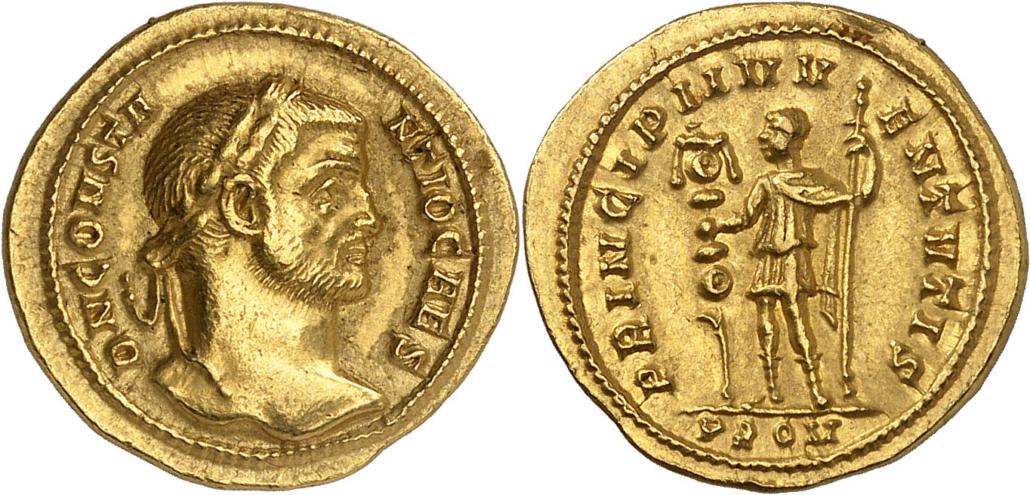
Constantius Chlorus. Aureus, Rome, 293/4. From the Trau Coll. (1935), No. 3522 and the Voirol Coll. (1968), No. 576. Very rare. Extremely fine. Jacquier, R.L. Collection (13 September 2024), No. 49. Estimate: 10,000 euros.
The Tetrarchs
Only two pieces from this period can be found in the collection – but these two coins are incredibly impressive! A perfect aureus of Maximianus Herculius and an extremely fine specimen of the very rare 293/4 issue of Constantius Chlorus. We present these pieces to show another example of perfect provenance. Can a Roman coin have a better pedigree than the collections of the Roman experts Franz Trau and Dr. August Voirol?
Constantine and His Descendants
This brings us to Constantine and his descendants. Instead of aurei, we find mostly solidi in this section, most of them in gorgeous quality with interesting designs. Coins of the 3rd and 4th centuries are still considered an insider tip among collectors, as even great rarities can be found at affordable prices. Take a look at this 1.5-scripula piece struck on the occasion of the tricennalia of Constantine I in 336. The reverse shows a motif that is typical of the jubilee of a reign. Such jubilees were not only associated with sacrifices and promises to the gods, but also with generous gifts to soldiers. In this way, emperors wanted to give soldiers an incentive to support a long reign instead of hoping for the gift they would receive by a new emperor taking office. Our coin was probably a donativum, a coin distributed as a gift in 336.
The Later Roman Empire
Every last detail of the depiction on the reverse of the celebratory issue of Valens is visible: We can see the two emperors in their splendid robes, with a nimbus around the crown, sitting on a bench, holding a mappa and a short sceptre in their hands; at their feet crouch two prisoners with their hands tied behind their backs. This proud representation makes us forget that Valens would lose his life ten years later fighting against the Goths on the battlefield of Adrianople. His contemporaries saw his defeat as a major turning point.
Valens’ death heralded the military retreat of the Roman Empire. During this time, the Empire’s territory was shrinking constantly. External threats as well as internal battles consumed more resources than taxpayers could afford.
As a result, many coins from this era are incredibly rare, such as the solidus of Magnus Maximus, whose mint is now believed to have been located in London. Almost as rare is this solidus of the usurper Constantine III from Trier, who for several years protected Britain, Gaul and Germania from invading peoples.
The R.L. Collection includes 38 coins from this eventful period, showing portraits of emperors and empresses minted by the Merovingians, the Eastern and the Western Roman Empires. Taking a closer look is definitely worth it!






